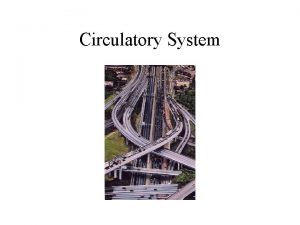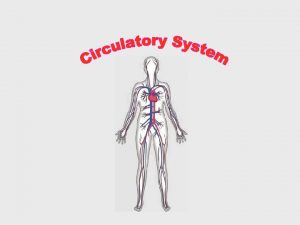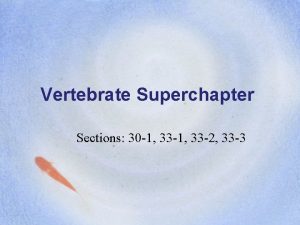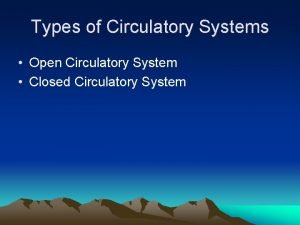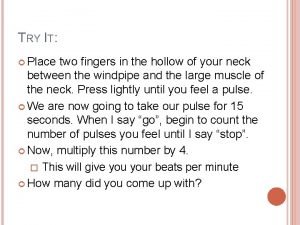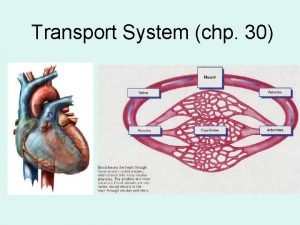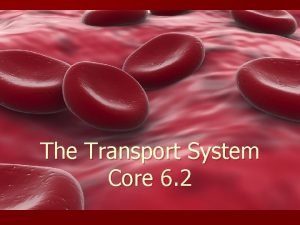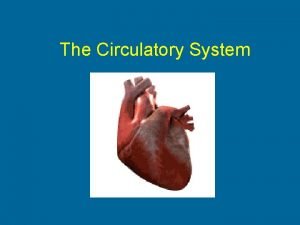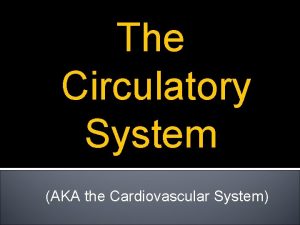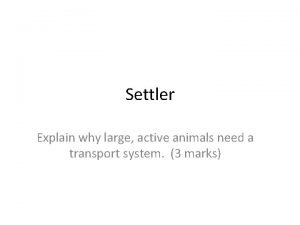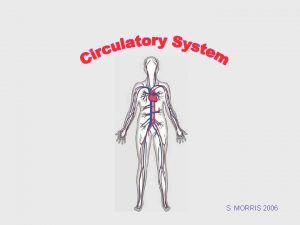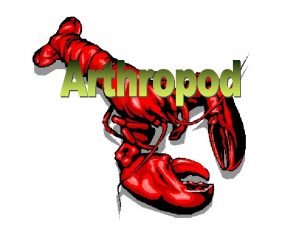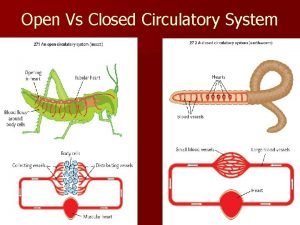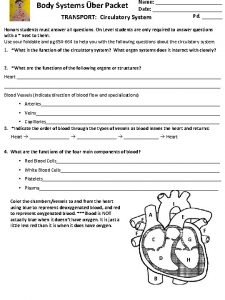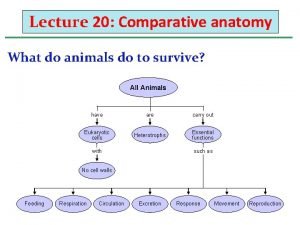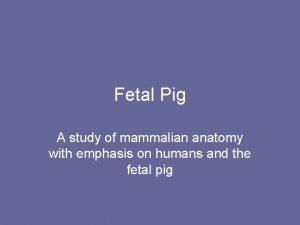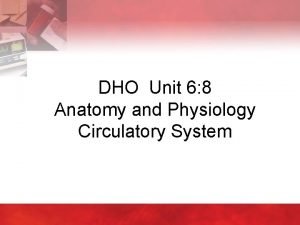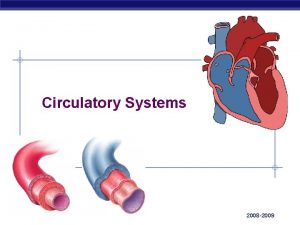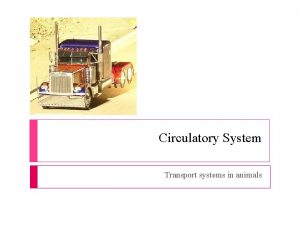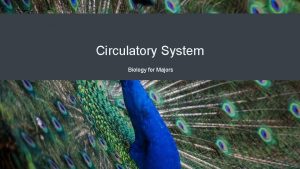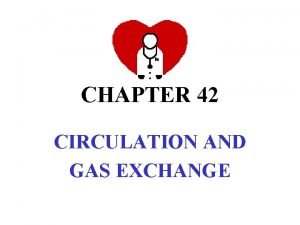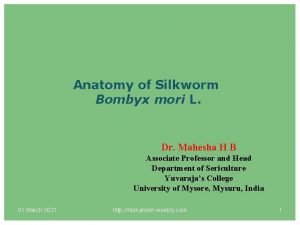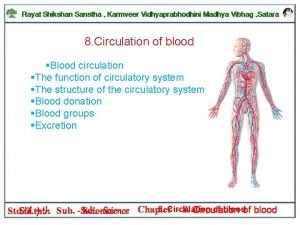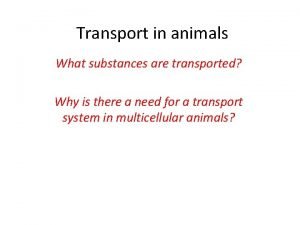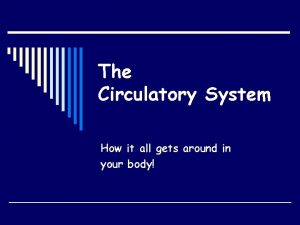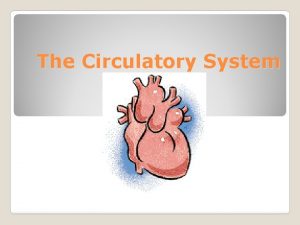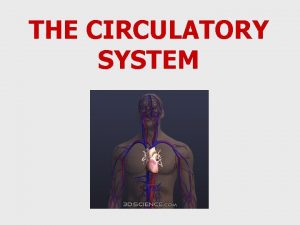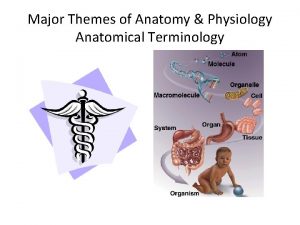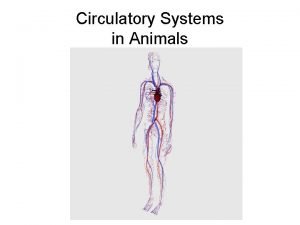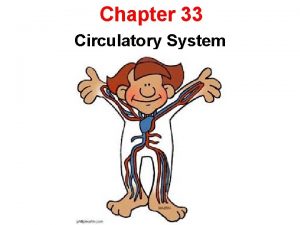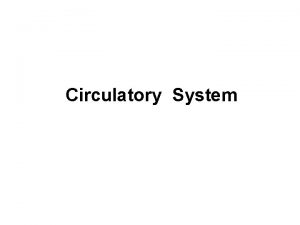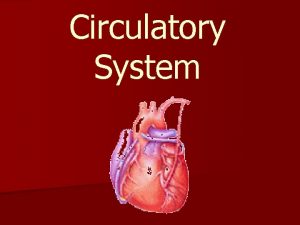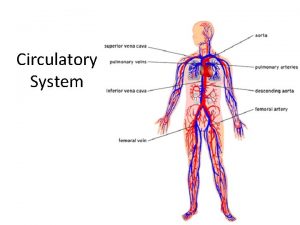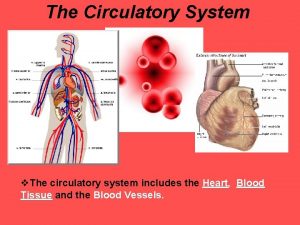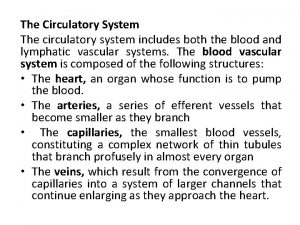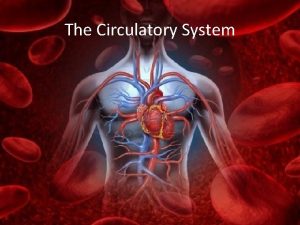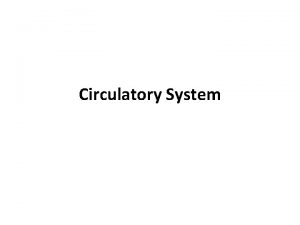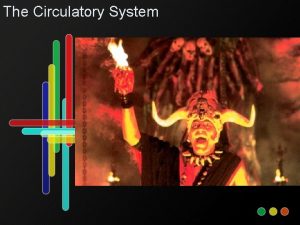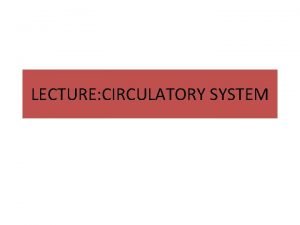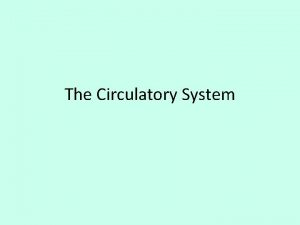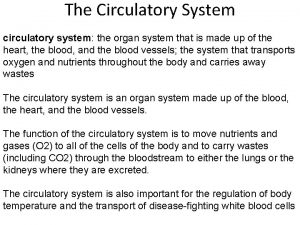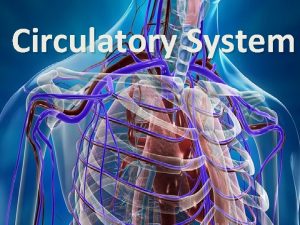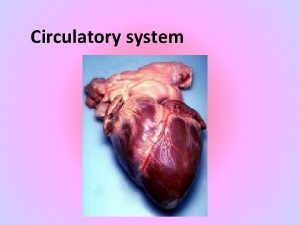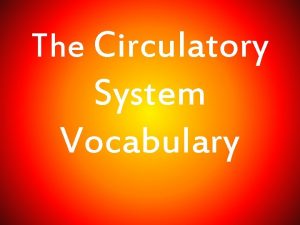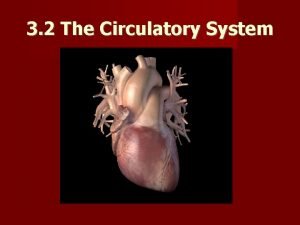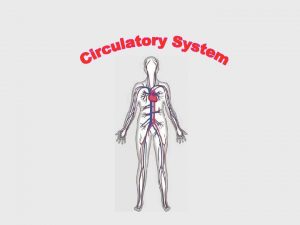Circulatory System Circulatory System It is includes two












































- Slides: 44

Circulatory System

Circulatory System It is includes two systems Cardiovascular SystemØ Lymphatic SystemØ

Cardiovascular System It consists of Ø Blood § Heart § Blood Vessels § Function of cardiovascular systemØ

Blood It consists of Blood CellsØ Red Blood Cells (RBCs) § White Blood Cells (WBCs) § Platelets § PlasmaØ

Heart

Cardiac cycles Minor blood cycleØ Major blood cycleØ

Blood Vessels It includes ArteriesØ VeinsØ CapillariesØ

Anastomosis Connection between adjacent vesselsØ Function of anastomosisØ Types of anastomoses They are three type of anastomoses 1. Arterial anastomosis Actual Arterial anastomosis Ø Potential arterial anastomosisØ 2. Venous anastomosis 3. Arteriovenous anastomosis

Lymphatic System It consists of Lymph FluidØ Lymph vesselsØ Lymph capillaries § Lymphatic ducts § Lymph nodesØ Lymph organsØ Spleen § Thymus § Tonsils § Function of lymphatic system §

Nervous System

Nervous System Can be divided according to: Structural categoriesØ Functional categoriesØ

Structural divisions of the nervous system Central nervous system (CNS)Ø Brain and spinal cord § Peripheral nervous system (PNS)Ø Cranial nerves (nerves that extend from the brain) § Spinal nerves (nerves that extend from the spinal cord) § Ganglia (clusters of neuron cell bodies located outside the § CNS)


Functional divisions of the nervous system Sensory afferent division: Ø Receives sensory information (input) from receptors and § transmits this information to the CNS. Motor efferent division: Ø Transmits motor impulses (output) from the CNS to § muscles or glands (effector organs).

Sensory afferent division Two components Somatic sensory components: General somatic senses: Ø Touch, pain, pressure, vibration, temperature , proprioception Special senses: Ø Taste, Vision, Hearing, Balance, smell Visceral sensory components Transmit nerve impulses from blood vessels and viscera to Ø the CNS visceral senses primarily include: Ø Temperature, stretch (of the organ wall).

Motor efferent division Two components Ø Somatic motor component (somatic nervous system; SNS): Conducts nerve impulses from the CNS to skeletal muscles Ø Also known as the voluntary nervous system Ø Autonomic motor component (autonomic nervous system; ANS) Innervates Internal organs Ø Regulates smooth muscle Ø Regulates cardiac muscle Ø Regulates glands Ø also known as the visceral motor system or involuntary Ø nervous system


Nerve Cells Two distinct cell types Neurons Excitable cells § Initiate and transmit nerve impulses § Glial cells Non excitable cells § Support and protect the neurons §

Neuron is the functional and structural unit of central Ø nervous system Characteristics of Neurons have a high metabolic rate. Ø Neurons have extreme longevity. Ø Neurons typically are non-mitotic. Ø Structure of neuron Cell body (soma, perikaryon)Ø DendritesØ AxonØ

Classifications of Neurons Classified based on Structural classification Ø Functional classification Ø

neurons According to the number of processes extending from the cell body. Unipolar neuron has a single process Ø Bipolar neurons have two processes Ø Pseudounipolar neuron have one process but divided into 2 Ø Multipolar neurons have three or more processes Ø

Functional classification of neurons Sensory afferent neuronsØ From receptor to CNS Motor efferent neuronsØ From CNS to effectors Interneurons (association neurons) Ø Facilitate communication between sensory and motor neurons.

Glial (neuroglia) Cells Characteristics of glial cells Occur within both the CNS and the PNS. § are smaller than neurons § are capable of mitosis. § do not transmit nerve impulses. § Function of glial cell physically protect neurons § help nourish neurons § provide a supporting framework § for all the nervous tissue. Types of glial cells Astrocyte, oligodendrocyte, microglia, ependymal cell

Synapses Synapse is the connection between neurons Types of synapses 1. Axoaxonic synape 2. Axosomatic synapse 3. Axodendritic synapse 4. Dendrodendritic synapse

Spinal cord

Structure of the spinal cord

Meninges of the spinal cord Connective tissue membranes which surround the spinal cord Dura mater § Arachnoid mater § Pia mater §

Brain

Meninges of the brain Connective tissue membranes which surround the brain Dura mater § Arachnoid mater § Pia mater §

Spinal Nerves 31 pairs of nervesØ Connect the CNS to: Ø Receptors § Muscles, glands § Each spinal nerve is mixed: Ø Sensory axons originate from receptors § Motor axons originate from the spinal cord. § Anterior root and posterior root unite Ø within the intervertebral foramen. Spinal nerve is associated with the Ø vertebra of the same number.

Rami of Spinal Nerves Posterior (or Dorsal) ramus Innervates muscles and skin of the back Anterior ramus Largest branch § Forms plexuses § Innervates anterior and lateral trunk, § upper and lower limbs Rami communicantes Autonomic nervous system (sympathetic)


Nerve Plexuses Cervical plexuses Brachial plexuses

Nerve Plexuses Lumbar plexuses Sacral plexuses

Cranial nerves 12 pairs of nerves 1. Olfactory nerve 2. Optic nerve 3. Oculomotor nerve 4. Trochlear nerve 5. Trigeminal nerve 6. Abducent nerve 7. Fascial nerve 8. Vestibulocochlear nerve 9. Glossopharyngeal nerve 10. Vagus nerve 11. Accessory nerve 12. Hypoglossal nerve

Autonomic Nervous System Complex system of nervesØ Controls involuntary actions. Ø Function of the autonomic nervous system Regulates body organsØ Maintains normal internal functions. Ø Divisions of the autonomic nervous system Sympathetic systemØ Parasympathetic systemØ

Sympathetic system Also termed the thoracolumbar division. Ø Primarily concerned with preparing the body for Ø emergencies. Referred to as the “fight-or-flight”Ø



Parasympathetic system Also termed the craniosacral division. Ø Primarily concerned with: Ø Conserving energy § Replenishing nutrient stores. § Is most active when the body is at rest or digesting a meal. §


Autonomic Plexuses Collections of sympathetic postganglionic axons and Ø parasympathetic preganglionic axons, as well as some visceral sensory axons. Close to one another, but they do not interact or synapse Ø with one another. Provide a complex innervation pattern to their target Ø organs.

Autonomic Plexuses Cardiac plexus Ø Pulmonary PlexusØ Abdominal aortic plexusØ Hypogastric plexusØ

Thank you
 Circulatory system tissue
Circulatory system tissue Circularory system
Circularory system Circulatory system function
Circulatory system function Tiny air sacs at the end of the bronchioles
Tiny air sacs at the end of the bronchioles Circulatory system and respiratory system work together
Circulatory system and respiratory system work together Circulatory system steps in order
Circulatory system steps in order Non vertebrate
Non vertebrate Circulatory system of lungfish
Circulatory system of lungfish Clam open circulatory system
Clam open circulatory system Circulatory system of a cow
Circulatory system of a cow Veinioles
Veinioles Closed circulatory system
Closed circulatory system Circulatory system job
Circulatory system job Smallest blood vessel
Smallest blood vessel Double circulatory system
Double circulatory system How circulatory system work
How circulatory system work What makes up the cardiovascular system
What makes up the cardiovascular system The actual exchange of gases occurs at the site of the
The actual exchange of gases occurs at the site of the Single circulation and double circulation
Single circulation and double circulation Subphylum
Subphylum Closed circulatory system
Closed circulatory system Open vs closed circulatory system
Open vs closed circulatory system Circulatory system foldable
Circulatory system foldable Invertebrate circulatory system
Invertebrate circulatory system Fetal pig circulatory system
Fetal pig circulatory system Unit 6:8 circulatory system
Unit 6:8 circulatory system Open circulatory system
Open circulatory system Invertebrate circulatory system
Invertebrate circulatory system Circulatory system function
Circulatory system function Arthropods circulatory system
Arthropods circulatory system Difference between open and closed circulatory system
Difference between open and closed circulatory system Chapter 34 section 2 the respiratory system
Chapter 34 section 2 the respiratory system Reptile circulatory system
Reptile circulatory system Bombyx mori silkworm diagram
Bombyx mori silkworm diagram Function of the circulatory system
Function of the circulatory system Transport substances in animals
Transport substances in animals Circulatory system interactions with other systems
Circulatory system interactions with other systems Function a
Function a Abo wikipedia
Abo wikipedia Capillary bed labeled
Capillary bed labeled Circulatory system
Circulatory system Function of digestive tract
Function of digestive tract Amphibian and reptile circulatory system
Amphibian and reptile circulatory system Chapter 33 circulatory and respiratory systems
Chapter 33 circulatory and respiratory systems Characteristics of phylum mollusca
Characteristics of phylum mollusca


